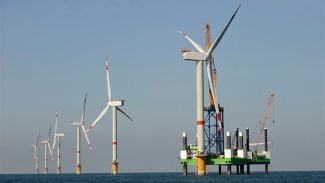
The current energy system is being challenged in several dimensions. Climate change requires the integration of carbon-neutral but volatile renewables. Homeowners are discovering the benefits of self-production, leaving the electric utilities in many US states, in Europe, and in Australia with stranded assets. Transportation grids need to be built to transport electricity from remote wind parks to urban load centers. Regulatory agencies are trying to find adequate mechanisms and incentives to ensure long-term security of supply, whereas IT providers and telecommunication companies want to earn money with data analytics on the consumption patterns of end-users.
In Germany, the retail price of a kilowatt hour has reached €0.30—half of which stems from levies for renewables, grid concessions, and taxes. Meanwhile, the European Commission’s in-house science service, the Joint Research Centre, calculates that the levelized cost of electricity—that is, taking all cost factors into account, including investment costs—from photovoltaic (PV) panels that are already written off does not exceed €0.02 per kilowatt hour. A simple calculation suggests that about €0.28 is potentially available for private homeowners to become independent from their electricity suppliers. With these savings, they may be able to finance their individual storage capacities or, more broadly speaking, to privatize security of supply on the micro level.
Suppliers are already offering solutions for this market. Germany’s largest independent green energy retailer, LichtBlick, joined forces with Californian electric car manufacturer Tesla to bring stationary lithium-ion batteries into households. Germany’s incumbent energy utility E.ON announced a partnership with startup Solarwatt to accelerate the rollout of modular residential storage systems. If security of supply can be privatized to households or industry sites, then society avoids the costs for integrating intermittent renewables from decentralized resources. The construction of long-distance transmission lines may no longer be necessary because supply and demand stabilize themselves within island grids. A household becomes a largely autonomous micro system, potentially trading power with its neighbors or becoming connected to a small-scale district heating network. Society benefits from this transformation because risks related to grid stability are shifted to the individual homeowner or community. Investments in an oversized transmission infrastructure—as happened in eastern Australia—can be avoided because demand is met locally.
Customers will have the choice to become energy independent or to pay the equivalent of an insurance fee for their security of supply, like a flatrate, which may serve as a steady source of income for local or regional distribution grid operators. How realistic is this scenario? Let us keep in mind that the number of PV panels being written off is increasing globally, the cost curve for rooftop PV has not yet reached its bottom, and the market for energy storage will grow significantly with Tesla’s Gigafactory and manufacturers such as Daimler announcing their entry into this industry.

